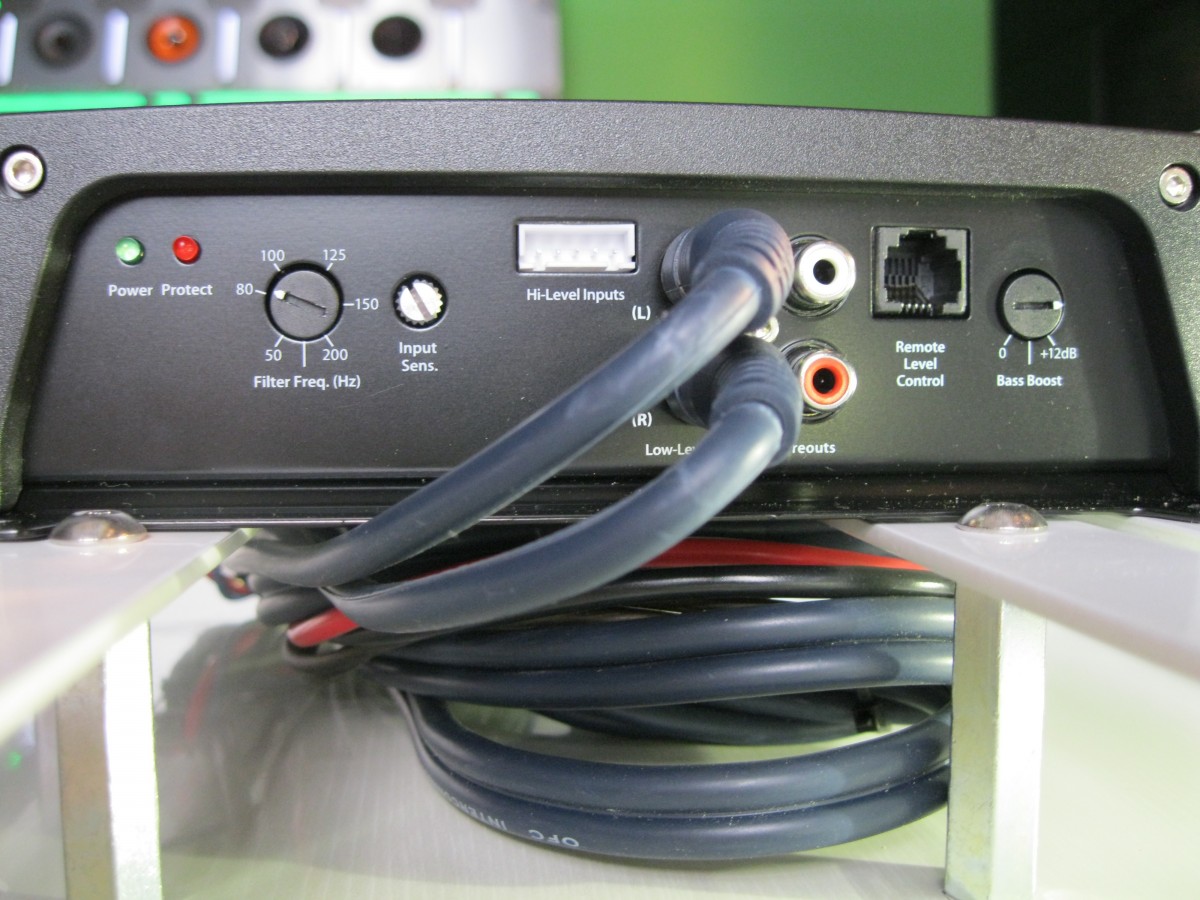What do all these dials and switches on my amp do?
This article discusses the various adjustments made when installing a car audio subwoofer amplifier. Addressing cross over adjustments, gain adjustments and Bass EQ
Estimated read time: 3 minutes 45 seconds. Want to read later?
Hello everyone! I’ve been meaning to write this for a long time, so sorry for the delay between posts. At Sounds Incredible Mobile, I get plenty of customers who like to install their equipment themselves. I’m all for that, unless they don’t know what they’re doing and they blow something up because of improper installation. So, if you’ve got a nice amp and sub you want to install, but you’re afraid you don’t know what you’re doing as far as tuning goes, this article is for you.
So what are all these adjustments and dials on the side of the amp? What do they do?

Low Pass Filter. This is the 1st thing you’re going to want to adjust. If you’ve got a car with decent sized speakers, like 6.5″ or 6×9, you’ll want to set this to about 80 hertz (lo-pass). If your head unit has built in crossovers, you want to set those at 80 hertz (hi-pass) as well. This way your interior speakers are playing 80 hertz and up, the frequencies they’re most capable of playing and your subs will be playing 80 hertz and down. This way everything is playing as efficiently as possible and each component is playing the frequencies they’re designed to play. If your speakers are smaller than that, you may want to set the cross over on the amp and head unit around 90-100 hertz to make up for what the smaller speakers can’t really reproduce. Once that is set, we can move on to gain.
Gain is not a volume knob, that’s a very important thing to remember when it comes to tuning. In fact, it’s so important, it bears repeating: gain is not a volume knob. It’s a sensitivity level adjustment. It’s about matching the sensitivity of your deck’s subwoofer preout to the amplifier. Let’s say you have a basic head unit with a 1.8 Volt preout. The amplifier is not going to be as sensitive to a 1.8 Volt preout as one with a 4 Volt preout. So you want to match the sensitivity. Minimum on an amp gain is usually 5 Volts, Maximum is usually around .2 Volts. Even your cheapest aftermarket head unit is usually at least around 1.2 Volts, so even then your gain should never be maxed out.
If you’re going speaker level in, you’d probably be surprised to learn you’re probably around 5 Volts, so even with a stock head unit, you shouldn’t have to crank the gains. If it sounds like you need to, please read an earlier post about adding an amp and sub to a stock system. If you get the wrong speakers for the source of the signal or if you have a stock amplified system, you may need to tweak a few things to get the sensitivity right.
A good rule of thumb is to never put the gain up more than 3/4, but if your deck is on the higher voltage side, less should be sufficient. Remember, distortion is what kills subs and speakers. It’s a lot harder to hear distortion on bass than it is on interior speakers. And certain songs may distort at certain volumes while others do not, so it’s something you really have to pay attention to in order to avoid damaging your equipment. So crank the volume, put on a variety of music, and slowly bring up the gains to a point where it sounds good, but you don’t hear the subs flubbering or distorting.
Bass EQ. What exactly is Bass EQ? Frequencies have wavelength, a frequency of 45 hertz has a wavelength of about 25 feet. This means in order to hear the full cycle of a 45 hertz wave, that wave has to travel a full 25 feet. The distance from your subwoofer box and your ears is probably less than half that distance (This is why I love time correction/time alignment!). The other issue you run into in a car environment is incidental sound waves. That 45 hertz sound wave is not only trying to travel to the front of the cabin, but part of it is going to hit the other walls of your trunk and bounce back towards the front. Some of these sound waves will put that 45 hertz frequency out of phase due to the timing of the sound waves.
By boosting that frequency, we help to make up for any phasing issues that may occur due to cabin design. It helps to play around with the placement of the sub before actually turning this adjustment up. Sometimes you have to use Bass EQ just to correct phasing issues that occur due to road noise. This is definitely true if you find your system sounds good when you’re not moving, but your bass disappears as your drive.
Bass boost adjustments are usually tuned around 45-50 hertz on amplifiers, so they are boosting the playback of that particular frequency. Bass Boost or Bass EQ adjustments should be done last after all other adjustments have been done and subwoofer positions have been tested as it’s really an attempt to correct for poor cabin acoustics.
The car is a tough environment for acoustical bliss, but it can be achieved with some technical understanding and some time and patience.
